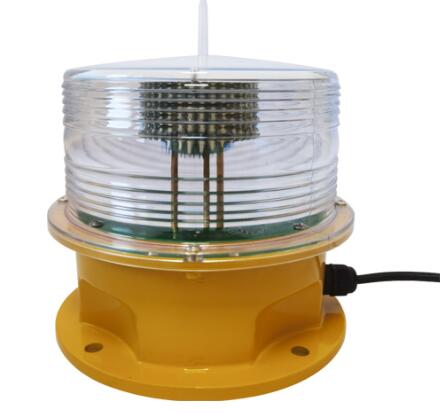Posted: 2025-05-06
In the aviation world, visibility is not just a matter of convenience—it's a matter of safety. One critical component that ensures aircraft are seen clearly in all weather and lighting conditions is the LED aircraft beacon. These beacons, which flash brilliant pulses of light, serve as vital warning and identification signals, enhancing the safety of aircraft during both flight and ground operations. As technology advances, the traditional rotating or incandescent beacon has been replaced by the more efficient and reliable LED aircraft beacon.
Understanding the Purpose of an LED Aircraft Beacon
An LED aircraft beacon is an external lighting device mounted on an aircraft, typically at the top and/or bottom of the fuselage. Its main role is to emit high-intensity, flashing red or white light to indicate that the aircraft systems are active or that the aircraft is in operation. These beacons alert ground personnel to the presence of an active aircraft, reducing the risk of collisions or accidental contact with moving parts.
Unlike navigation lights that are used to indicate an aircraft’s position and direction, the beacon’s role is to signal motion and readiness—an essential safety measure during engine startup, taxiing, takeoff, and landing.

Why LED Technology Is Transforming Aircraft Beacons
The shift from traditional lighting technologies to LED has transformed the performance and durability of aviation lighting systems. The LED aircraft beacon offers several key advantages:
Extended Lifespan: LEDs last significantly longer than incandescent bulbs, reducing the frequency of maintenance and replacement.
High Visibility: LEDs provide brighter, more consistent light output, improving visibility in fog, rain, and daylight.
Lower Power Consumption: LED systems draw less electrical power, which is essential for optimizing overall aircraft energy use.
Reduced Heat Emission: Unlike older beacons, LEDs emit minimal heat, enhancing safety and preventing overheating issues.
These features make LED aircraft beacons not just an upgrade, but a standard for modern aviation safety.
| led aircraft beacon |
Design Features of an LED Aircraft Beacon
A typical LED aircraft beacon is designed for aerodynamic efficiency, ruggedness, and reliability. Encased in weather-resistant housings, the beacons are often sealed against dust, moisture, and vibration—conditions commonly experienced during flight and on the tarmac.
The optical design of the beacon is engineered to disperse light across a wide angle, ensuring that the beacon is visible from multiple directions. Some advanced models use smart circuitry to manage light intensity or to synchronize flashing patterns with other aircraft lights, enhancing situational awareness.
Mounting configurations vary depending on aircraft type. Commercial jets may use dual beacons—top and bottom—while smaller aircraft may have a single beacon installed centrally. Regardless of configuration, the goal is uniform visibility from all relevant viewpoints.
Regulatory Compliance and Safety Standards
All LED aircraft beacon systems must comply with stringent aviation safety standards set by bodies such as the FAA, EASA, and ICAO. These standards regulate factors like flash rate (typically around 40 to 100 flashes per minute), color output, brightness levels, and placement.
Compliance ensures that beacons are not just bright enough to be seen, but also not so intense that they impair the vision of pilots, crew, or ground operators. LED beacons are tested for electromagnetic interference, durability under pressure, and performance under extreme temperatures.
By meeting these regulatory demands, the LED aircraft beacon becomes a reliable tool for flight safety around the globe.
Applications Beyond the Runway
While the primary use of an LED aircraft beacon is in aviation, similar technology has found use in related sectors. For instance, unmanned aerial vehicles (UAVs) now utilize miniaturized LED beacons for nighttime operations. These lights enhance drone visibility and prevent mid-air collisions.
Additionally, airport service vehicles and ground support equipment often use beacon-style lights to improve safety in busy apron and taxiway environments. The adaptation of LED beacons in such applications underscores their reliability and flexibility.
Maintenance Benefits and Operational Efficiency
One of the less discussed, yet highly impactful, benefits of an LED aircraft beacon is its role in operational efficiency. Maintenance crews appreciate the reduced need for part replacement and the simplicity of diagnostics in LED systems. Some LED beacons include self-monitoring capabilities, which can alert maintenance staff to operational issues before failures occur.
The longevity of LED systems contributes to better aircraft uptime, lower labor costs, and reduced risk of in-flight lighting failures. In industries where time and safety are paramount, these savings are crucial.
Environmental and Operational Resilience
The environmental footprint of aviation is a growing concern, and the adoption of energy-efficient systems such as LED aircraft beacons supports broader sustainability goals. These beacons not only consume less power but are also manufactured with fewer hazardous materials than traditional lighting components.
Moreover, the durability of LED systems allows them to perform reliably under extreme environmental conditions—be it high-altitude cold, coastal humidity, or desert heat. Their resilience makes them suitable for a diverse range of aircraft, from commercial airliners to military helicopters and private jets.
Future Trends in Beacon Technology
The evolution of the LED aircraft beacon is far from over. As aircraft become more intelligent and interconnected, beacon systems may integrate with digital control panels, real-time diagnostic systems, and even external air traffic control interfaces. Smart beacon systems could automatically adjust brightness based on ambient conditions or synchronize with runway lighting to provide additional guidance cues.
Wireless monitoring, modular upgrades, and AI-enhanced diagnostics are expected to influence the next generation of aviation lighting systems, making the beacon more than just a warning light—it becomes part of an integrated safety and communication network.
The LED aircraft beacon represents a perfect blend of technology, safety, and efficiency in modern aviation. Its role, while visually simple, is fundamentally critical. Through superior visibility, energy efficiency, and operational reliability, it supports the ongoing evolution of flight safety. Whether guiding a commercial jet on a stormy night or alerting a ramp crew during engine startup, the LED aircraft beacon stands as a beacon—literally and figuratively—of modern aviation progress.